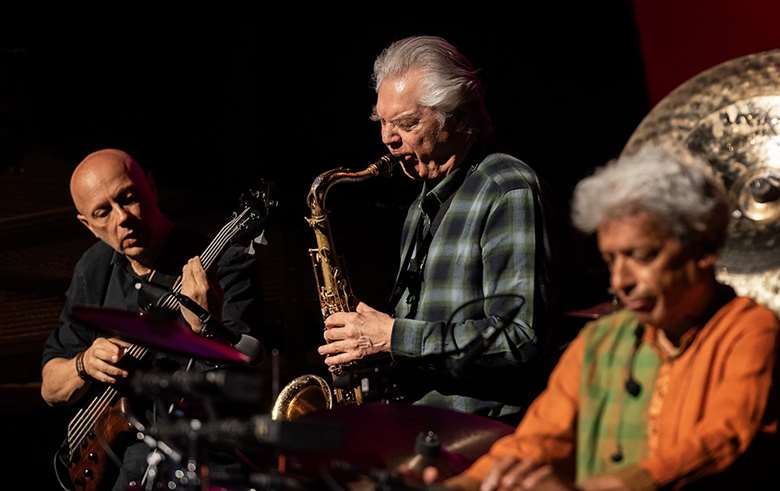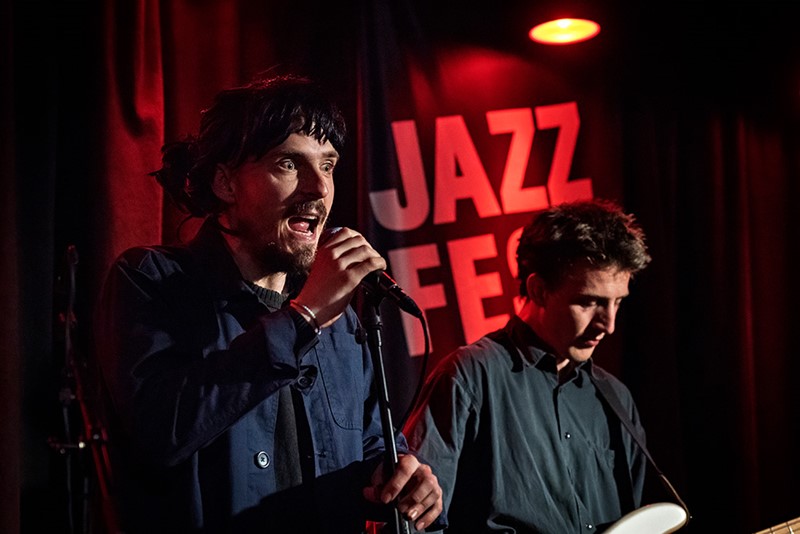Jan Garbarek among Trondheim Jazzfest highlights
Martin Longley
Tuesday, June 7, 2022
The revered Norwegian saxophonist headlined an eclectic line-up at this acclaimed Scandinavian jazz festival

Trondheim is technically a central Norwegian city, but it still feels very northern in relation to Oslo, Bergen, Stavanger and Molde. Trondheim Jazzfest has been running under that name since 1998, but its roots stretch back to 1980. Running for a week, it inhabits a host of venues, from the Lokal Scene bar up to the Olavshallen concert hall. This latter high-riser boasted an opening show by the Jan Garbarek Group, featuring Trilok Gurtu on percussion. It’s been a long while since your scribe has witnessed Garbarek, and this set turned out to be one of the saxophonist’s most impressive offerings, instilled with a concentrated power, even when negotiating more serene compositions. The presence of Gurtu added flash and thunder, as he altered the volume and density, turning from tabla to kit-drums, using cajon, or smaller, sensitive percussion. Garbarek issued labyrinthine solos, bright, playful lines, with a firm, keening tone. but keyboardist Rainer Brüninghaus and electric bassist Yuri Daniel were also given ample space to shine. It approached a two-hour set, but this quartet managed to authoritatively maintain their heightened atmospheres.
The following night involved maximum extremity, on multiple levels. The Guts And String Octet is a new beast sewn together by Ingebrigt Håker Flaten (basses) and Paal Nilssen-Love (drums), inviting a truly inspired gathering of artists not previously imagined on one stage. The multi-nationality horn section was three-quarters female, with Isabelle Duthoit, Hanne de Backer and Signe Emmeluth joined by Magnus Broo. Alexander Hawkins played piano and Hammond B3 organ, with congaman Johan Holmegard completing the roster. They made the waterside Dokkhuset venue vibrate and moan with their sculpted freak-outs, incorporating full-pelt old school free jazz onslaught, spacious dada babble, and shaking retro-Afro grooving, Flaten’s bass switching from upright to electric, as needed. Never have we been shaken by such visible physical strain, as the bandleaders drove their players impossibly hard. The reeds included clarinet, alto, baritone, all taking solos of enormous mobility and precision, tiny horn gestures in an ongoing intertwining change of hierarchy. Emmeluth counted in the most breathless paces, signalling shifts of structure, flying stratospherically. Incredible stops, incredible starts! Nilssen-Love rubbed his massive hanging gong alongside a Hawkins organ susurrus, electric bass producing high-drone feedback, as parts of the set examined altered states of meditation or funkiness, alternating with some of the mightiest free-blowing we’re likely to hear all year.

At the aforementioned Lokal Scene, a new discovery was made, in the form of the Synesthetic 4 (above, photo by Arne Hauge), from Vienna. Still crammed with jazz, particularly via the clarinet of Vincent Pongracz, they also possess a nervy, taut-riffing essence of no wave NYC, courtesy of guitarist Peter Rom. Both of them wear very similar gear (blue jackets, salmon trousers), and have equally intense performing stances, matching sinister stares with hearty witticisms. The fidgety Pongracz downed clarinet on some songs, singing in a rhythmically dadaist flow. Rom’s slippery, unusual-toned axe sounded fretless, but did actually have frets. Pongracz’s vocals could have been Serbian, but sounded like Kurt Schwitters, loaded with rolled ‘r’s and jabber-spittle high pitches. Bass and drums are also fundamental to the staggered stutter-bomb Synesthetic twitch-dance.
In the basement Trykkeriet Scene, another pleasing discovery was Klabbes Bank, a Swedish combo who veiled their unusual horn formations in electronic waves. Sometimes this had the result of obscuring their most valuable asset, as leader Klas-Henrik Horngren applied thick 1980s clouds, leaving little room to breathe. They were at their best while being minimalist, just stray radio interference, sparse movements from the rest, with flute, clarinet and bass tentatively constructing a tune. The trombonist switched to guitar, leaving twinned alto saxophones, as the palette kept changing apace.
The weekend approached, and the sets multiplied, a festival-within-the-festival pulling in a student crowd, with vivid showings by Kalle, Koma Saxo, and Darrifourcq/Hermia/Ceccaldi. Also, the Dutch saxophonist Tineke Postma had the good taste to invite Ralph Alessi (trumpet) into her quartet, and Anna Webber unveiled a dynamic new work for the Trondheim Jazzorkester. This 2022 edition has resoundingly made a return to the festival’s expected form.